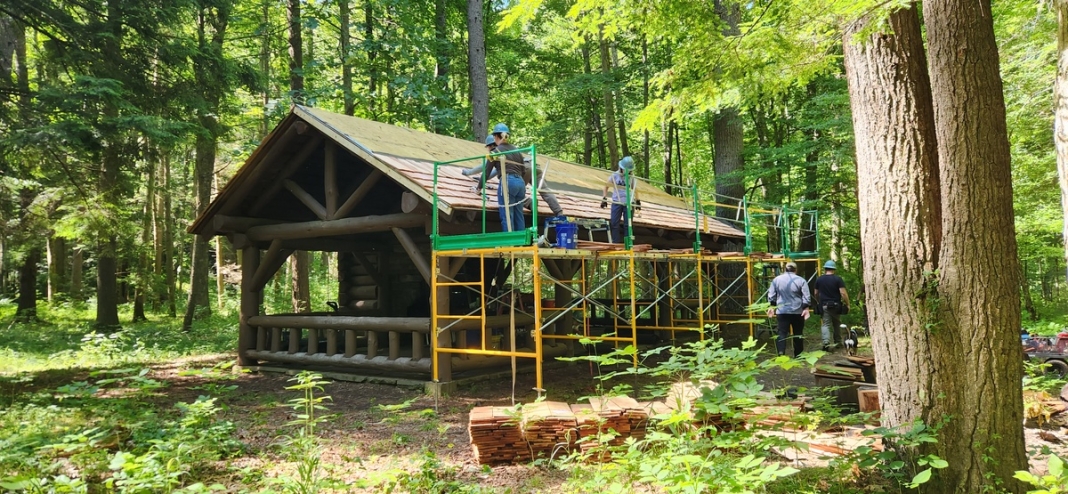FRANKFORD, W.Va. — One of the most significant restorations underway in West Virginia has attracted the attention of state preservationists, who are awarding its developers and proponents for their efforts.
The Preservation Alliance of West Virginia has awarded the repair of a log-built picnic pavilion and other structures at the Blue Bend Recreation Area with the title of "Most Significant Save of a Historic Site."
One of the principal structures in the recreation area, which is part of the Monongahela National Forest, is the pavilion, which was built by the Civilian Conservation Corps in the 1930s as part of a nationwide effort to provide recreational resources for citizens.
Often termed "parkitecture," the corps popularized a method of construction that incorporated wood and stone harvested locally. Many such structures are located in parks and forest areas in West Virginia.
In 2023, forest officials partnered with the non-profit HistoriCorps, the Appalachian Conservation Corps, and 20 volunteers to repair the deteriorated pavilion, rebuilding its roof and repointing its flagstone foundation. In 2024, HistoriCorps returned to complete the pavilion's roof and perform minor carpentry and log repairs.
According to Danielle Parker, executive director of the alliance, the award celebrates the team's dedication to rehabilitating historic recreational structures in West Virginia.
Blue Bend includes the pavilion, two stone-paved beaches, a swimming reservoir, and more than 20 camping sites. The park is part of the legacy of noted forest recreation planner Herbert T. Stoddard, who developed a methodology for managing recreational resources.
Dignitaries from the Preservation Alliance of West Virginia will visit the site Monday, October 28, at 10:30 a.m. to present the award.
For more information on the award, visit the Preservation Alliance website.
Sign up to receive a FREE copy of West Virginia Explorer Magazine in your email weekly. Sign me up!


